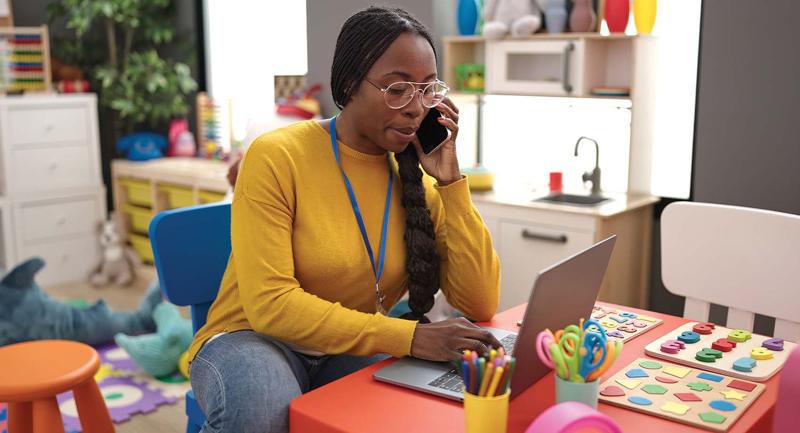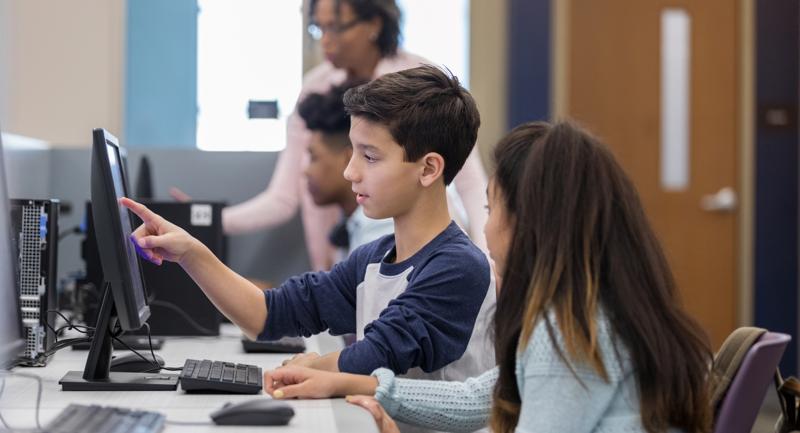When I walked into an inner-city middle school in Philadelphia nearly four decades ago as a young teacher, my plan was to try to teach students to memorize as much information as possible each day. As a new teacher, I wanted them to be seen as subject-matter experts because I thought my success would be measured by how much those students could repeat to others about their learning.
Was I wrong! The last thing they needed was to passively receive information from me. They needed to learn to make better decisions, to think critically, and to problem solve. I was constantly challenged to get struggling students to solve high-level math problems, or at least try their best. I needed to capture students’ attention with something relevant, challenging, and fun.
That game changer was chess. I taught them that chess is very mathematical but also connected to art and creativity. We learned how the knights moved on right angles and bishops moved on diagonals, but there is so much more to chess than mathematical concepts. Chess teaches problem solving, critical thinking, reasoning, patience, and creative and strategic thinking. These young people became so good at chess that they went on to win national championships and travel the world.
Fast forward 37 years, and children no longer have to rely on a teacher or family member to teach them how to play chess or other games, or to help them with homework. They have access to so many digital resources that their predecessors did not. They can watch a YouTube video about the most strategic chess moves or ask a chatbot for the perfect synonym. As educators, we need to adapt to the changing technology and teach students how to engage with it effectively, safely, and critically. Students still need to learn the skills to master their academic subjects, but they also need to be critical thinkers and digital problem solvers. My focus now as a school leader is to find ways to support my teachers and students when using technology in their everyday lives.
My focus now as a school leader is to find ways to support my teachers and students when using technology in their everyday lives.
It is essential for principals to help teachers develop collaborative, engaging, and academically challenging classrooms, to create new ways for students to do work with tools that did not exist a decade ago. To support a new generation of learners, we need to foster social-emotional learning and motivate students to take risks, but also encourage them to develop their critical thinking and cognitive skills. To do this, leaders must:
Create a school community that fosters a growth mindset and supports inquiry-based learning, frequently encouraging teachers and students to ask questions.
Build strong relationships and trust with students and staff so that they know they can take risks and be creative in the classroom. At my school, we’ve given new iPads to our teachers so they can annotate lesson plans, writing directly on the PDFs on screen with a stylus pen. These plans and annotations can be accessed by coaches and administrators in real time, so they can offer immediate feedback and encouragement.
Provide meaningful and thought-provoking professional development for teachers on critical thinking and problem solving in the classroom.
Incorporate student voice and agency. When students collaborate and learn from one another, they develop a sense of belonging and ownership of their learning.
Use technology to promote lifelong learning and challenge students to think critically. Solving problems and finding creative solutions are essential skills for school and life. Students must also learn the importance of digital literacy, digital citizenship, and online safety.
Encourage teachers and reward them for risk-taking. We reward success as leaders, but we must also begin to celebrate teachers who take on challenges. Effective teachers who choose to stay in teaching and bring joy to the school are willing to try new approaches and innovative strategies in their classrooms. They require leaders who support and promote innovation.
Balance technology time with face-to-face learning. Students need non-tech time to develop collaboration and communication skills and a balanced approach to screen time for their mental and physical health.
Provide resources for parents about healthy technology use at home, such as setting screen time limits and monitoring their child’s online behavior. Leaders can also model healthy use of technology by doing their own digital detox occasionally, striking a work/life balance, and promoting face-to-face communication with staff and students.
School leaders must promote a balanced, thoughtful, and intentional approach to cultivating an inquiry-based school culture and the safe use of technology in classrooms. Encouraging and supporting risk-taking, resilience, and collaboration in school will help students develop strong relationships and gain confidence in their learning. Leaders can model these behaviors by asking thought-provoking questions during staff meetings or classroom visits and listening to students and staff. In our quest to empower, lift, inspire, and motivate our staff and students to become problem solvers, we must remember to honor ourselves and celebrate the good work of all educators in our schools. In the same way a chess master is strategic about planning ahead and thinking about the future, school leaders need to make great moves for the kids in our classrooms. Digital problem solving could be our very own Queen’s Gambit!









